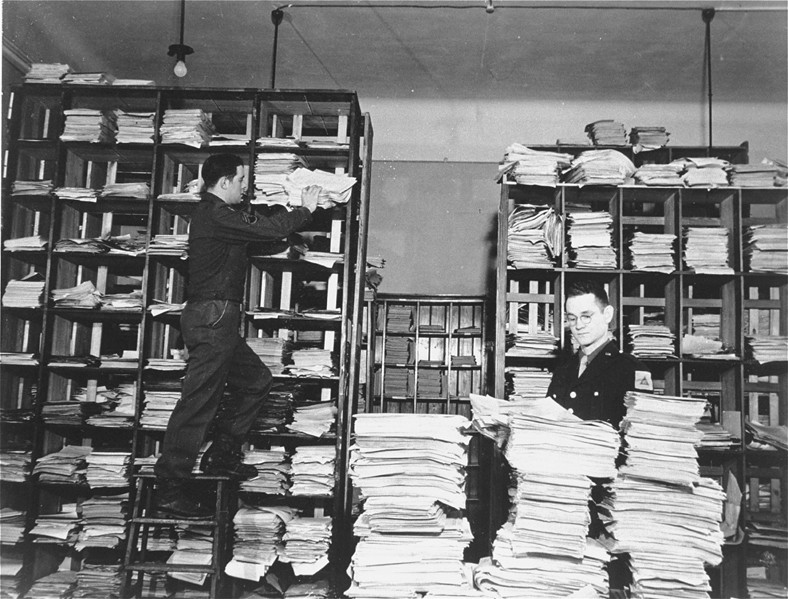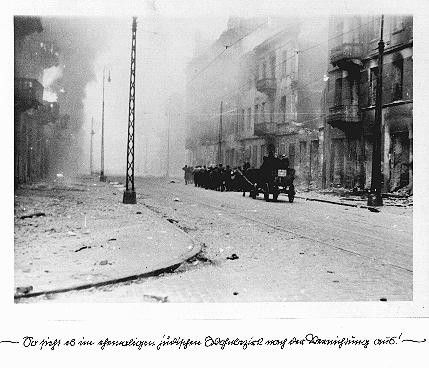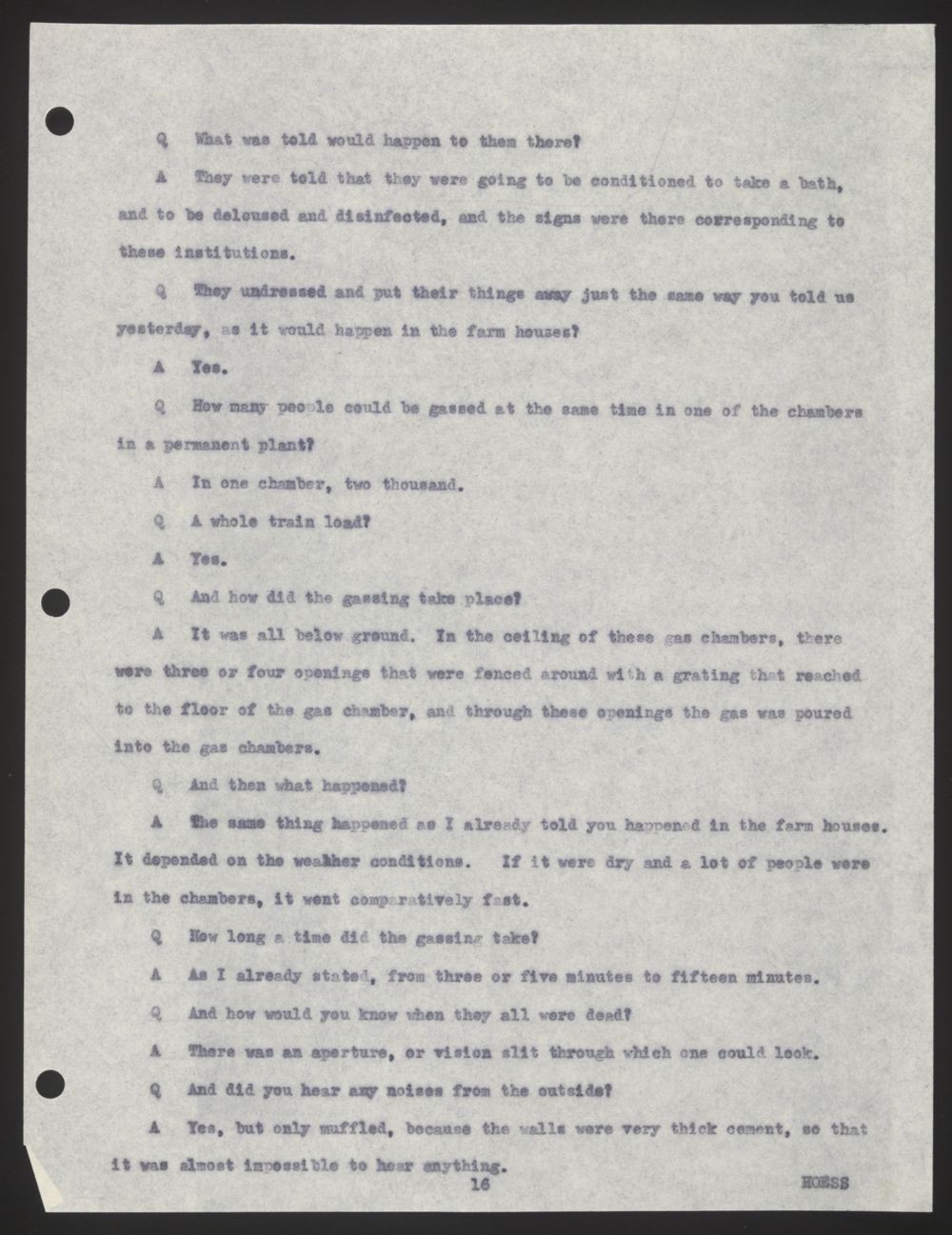
Evidence from the Holocaust at the First Nuremberg Trial
The goals of the International Military Tribunal (IMT) went beyond verdict and punishment. The creators of the IMT deliberately assembled a public record of the horrific crimes committed by Germans during World War II, including those of the Holocaust.
Key Facts
-
1
Prosecutors before the IMT based the case against leading Nazi officials primarily on thousands of documents written by the Germans themselves.
-
2
German documents and the testimony of German officials presented at the Nuremberg trial revealed and documented considerable information about the Holocaust.
-
3
The prosecutors and judges of the IMT published the proceedings and evidence to ensure that the history of Nazi crimes would not be forgotten.
The purpose of the Nuremberg trial was not merely, or even principally, to convict the leaders of Nazi Germany ... Of far greater importance, it seemed to me from the outset, was the making of a record of the Hitler regime which would withstand the test of history.
—Robert Storey, executive trial counsel of the US prosecution team
The International Military Tribunal (IMT) is the best known war crimes trial held after World War II. It formally opened in Nuremberg, Germany, on November 20, 1945. The trial hearings lasted until September 1, 1946. A month later, on October 1, the judges delivered their verdict. Out of the 22 defendants who stood trial, the court convicted 19 of the defendants and acquitted three.
The goals of the IMT, however, went beyond verdict and punishment. The creators of the court deliberately assembled a public record of the horrific crimes Germans committed during World War II, including those of the Holocaust.
In his report to President Truman dated June 6, 1945, US Prosecutor Robert Jackson explained:
Unless we write the record of this movement with clarity and precision, we cannot blame the future if in days of peace it finds incredible the accusatory generalities uttered during the war. We must establish incredible events by credible evidence.
Thus, from the start, the judges and prosecutors saw their tasks as twofold. One task was to determine the guilt or innocence of the defendants. The other was to create a record to ensure that the crimes of the Nazi regime could not be denied and would not be forgotten.
Documentary Evidence
The IMT prosecutors aimed to use the Germans' own words to convict them. They did not rely on personal testimony that might be viewed as biased. The case thus relied primarily on thousands of documents written by the Germans themselves.
Nineteen investigative teams collected and analyzed hundreds of thousands of German records. The records chosen to be presented in evidence were translated into the court’s four official languages: English, French, German, and Russian. These records were reproduced for distribution to defense attorneys and other trial participants.

Crimes against Jews were a small subset of the crimes prosecuted at the IMT. Nevertheless, the prosecutors submitted more than 100 German records that documented the persecution and murder of Jews by Nazi Germany.
One of these documents was the transcript of a speech given by Heinrich Himmler on October 4, 1943. Himmler was Reich Leader of the SS and German Police. Addressing high-ranking SS officers, he described "the annihilation of the Jewish people" as "a glorious page of our history" that was never to be written.
Another document was a detailed SS report on the use of gas vans to murder Jews. Also submitted into evidence was the infamous “Stroop Report.” This commemorative album by SS and Police Leader Jürgen Stroop documents the destruction of the Warsaw Ghetto in text and photos.
Eyewitness Testimony

At the IMT trial, testimony by German officials provided many important details about the “Final Solution” program to murder the European Jews.
For example, SS General Otto Ohlendorf described the mass shootings of Jews in territories seized from Soviet control. Ohlendorf was the commander of Einsatzgruppe D. He acknowledged that his own unit murdered 90,000 men, women, and children in one year.
Auschwitz commandant Rudolf Hoss testified regarding the murder of Jews in gas chambers at Auschwitz and other killing centers.
The IMT also heard evidence that the number of Nazi Germany’s Jewish victims was six million. This came from an affidavit by Dr. Wilhelm Hoettl of the Sicherheitsdienst (SD; the SS intelligence service). It referred to a conversation Hoettl had late in the war with Adolf Eichmann. Eichmann was head of the Gestapo’s Office for Jewish Affairs.
Film as Evidence
The IMT prosecutors also sought to document Nazi crimes with film footage. Some of this footage was taken by the Germans themselves. Other footage was produced by the Allies. For instance, the prosecution team showed a German home movie depicting violent abuse of Jews in the city of Lvov. The team also showed the film Nazi Concentration Camps, made by the US Army. This included footage of the liberation of concentration camps. The Soviets also produced a film showing evidence of Nazi atrocities in Eastern Europe. Their film documented the liberation of the Majdanek and Auschwitz concentration camps.
Preserving the Record
In early 1946—even before the trial ended—the United States published Nazi Conspiracy and Aggression. This eight-volume work is often referred to as "The Red Series" because of the color of its bookbinding. The Red Series summarizes the case presented by the US and British prosecutors at the IMT. It also publishes the documents that support their case, including evidence of the Holocaust. The editors of the Red Series explained that its purpose was to expose the crimes of Nazi Germany "for the warning of future generations as well as a reminder to the present."
Following the trial and verdict, the IMT published the official record of the court’s proceedings. This 42-volume work is titled Trial of the Major War Criminals before the International Military Tribunal. It is often referred to as "The Blue Series."
The United States also published the abridged record of the twelve subsequent Nuremberg proceedings. This is known as "The Green Series."
These three series continue to serve as important sources for historians of the Holocaust.

